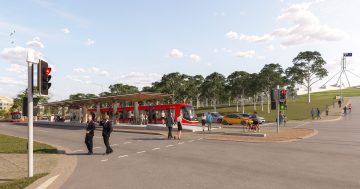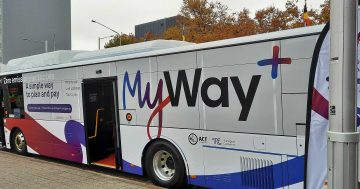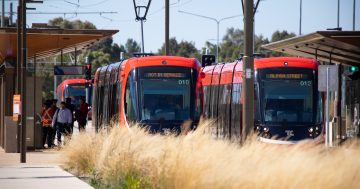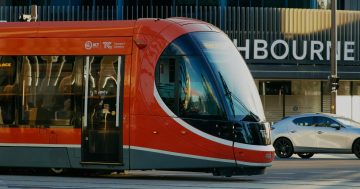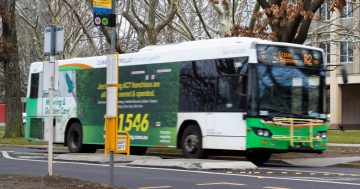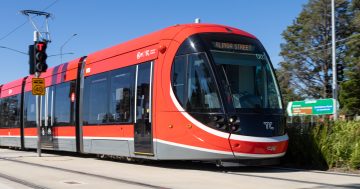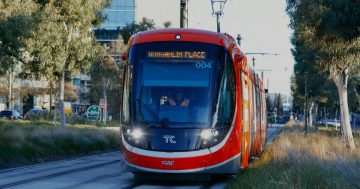
ACT Light Rail today provided the ACT Government with their submission in response to the draft ‘Transport for a Sustainable City 2011-2031’ transport planning document.
Mr Damien Haas, Chair of ACT Light Rail, said that the plan was a disappointment in that it was locking Canberra into a high density, congested, car-dependent culture – while the government was trying to pretend that the future high density Canberra would be built around public transport.
He said that while ACT Light Rail were pleased that the ACT Government has finally issued its latest strategic transport document, some two years late, sadly there was too little actual planning provided for mass transit Public Transport in the form of light rail.
The Government have hired expensive foreign consultants to tell them what they want to hear – that buses are the way to go. They talk ‘light rail’ but really its ‘Bus-ness as usual’. Their own bid to Infrastructure Australia proved the benefits to Canberra – but today its the ‘Study that dare not speak its name’, not being referenced at all in their ‘strategic planning ‘ document Mr Haas said.
‘The entire plan really lacks a cohesive vision’, Mr Haas said. ‘Increasing density and buying more buses is the extent of their plan and it means that they are just surrendering to road congestion. Future generations will regard this as an opportunity squandered.’
Today the ACT Government announced another bid to IA which has been sold in the media as a light rail bid. “The actual IA submission calls for light rail or Bus rapid transit, so once again its a case of reading the actual justification that the government put forward, rather than their media spin. Thsi is yet another study with no funding attached, and a hand out for someone else to pay for it.”
The submission by ACT Light Rail also makes the following points:
- · The draft Transport plan discusses openly the aim that medium and high density housing will be built along ‘transit corridors’ which means bus routes.
· By encouraging medium and high density housing, without providing the proper public transport to support it, Canberra will experience all the disadvantages of high density housing, and none of the advantages.
· The draft Transport plan is also disingenuous when it talks of light rail. Where light rail is mentioned, it is scant, and promises yet more ‘studies’.
· Not once is the Infrastructure Australia bid for light rail funding from only two years ago mentioned.
· There are no real plans for how exactly the government will convince motorists to shift from cars to public transport. The 2031 target is still only 16% of trips taken by public transport.
· The plan will actually reduce local bus services and increase trip times in urban areas.
· The draft Transport policy has no funding models attached to it and states several times that buses are the future for Canberra’s public transport.
On the subject of funding, Mr Haas said that this was the area in which ACT politicians could show real vision and leadership. “They had no problem smiling for the cameras when Majura park funding was announced, we would like to see the same effort applied to securing funding for light rail, and we make several recommendations on how they can achieve that funding – ranging from issuing bonds, borrowing money (like they have for the Majura parkway) or entering into a Private Public partnership.” Mr Haas said he had tried to meet with the Minister to discuss this but his meeting was cancelled and not rescheduled.
ACT Light Rail suggest that Transport for Canberra immediately start planning for light rail to be introduced into Canberra, and explore the funding models required for that to occur. To plan for a high density city without an appropriate public transport system to serve it, this Government is locking future residents into a more congested, car dependent, less sustainable future.
Authorised by Damien Haas
Chair, ACT Light Rail
Submission avalable from the ACT Light Rail website
[Photo by edwin.11 CC BY]













